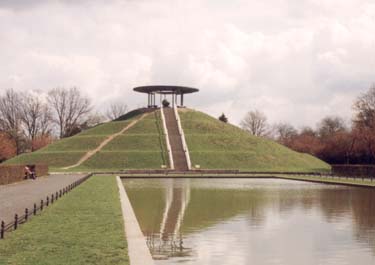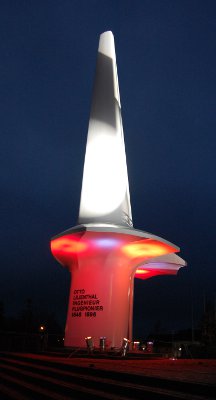Some related links that we suggest:
Lilienthal's great contribution was the gliding flight he pioneered
became the first step of human flight. The next steps should have
been using the wind, soaring flight, and the flapping wing engine.
But history went another way. The era of power flight started in 1903 with
the Wright
Brothers, although there were earlier flights reported (C.
Ader,
G. Weißkopf/Whitehead,
K. Jatho, R.
W. Pearse). The connection between Lilienthal and the Wright
Brothers was the railway engineer Octave
Chanute.
The rebirth of soaring
flight started in 1911 with the Wright brothers and after WW1
in the Rhön-hills in Germany, long after powered flight in the
1920s.
But only with the invention of the Rogallo-airfoil
in the middle of the 20th Century was the hang glider invented for
the second time.
The flapping of wings:
Stephan
Nitsch has reconstructed and tested most of the
Lilienthal-gliders that are exhibited in the museum. The bird flight
and flapping
of wings remained his topic of interest, as it is for W. Send, P. Bicheron & R.
Korobelnik, the FESTO company, and the Bigbird
XL project,.
But there is another, the earliest ancestor of the aeroplane: The kite is not given much consideration.
 Most locations of the Lilienthal
story are located in Berlin and its environs: the "Engineering
works 'Otto Lilienthal'" that realised the first serial
production of an aircraft, the 'Aviators Hill' and other places
where Lilienthal flew are presented in the museum
guide.
Most locations of the Lilienthal
story are located in Berlin and its environs: the "Engineering
works 'Otto Lilienthal'" that realised the first serial
production of an aircraft, the 'Aviators Hill' and other places
where Lilienthal flew are presented in the museum
guide.
The Berlin-Tegel airport today
is called "Otto Lilienthal."
Lilienthal Monument on the "Aviator Hill", Berlin

Lilienthal monument in Anklam. W. Preik, 1982
Original Gliders of Lilienthal are preserved in the following museums:
- Science Museum London
- Shukowski-Museum Moscow
- National Air and Space Museum Washington
- Technisches Museum Wien
- Parts of a glider and many of the known documents are preserved in the Deutsche Museum Munich
Early aviation history on the Web:
Today, thanks to many enthusiasts, the Web is a huge source of aviation history. Here are some examples that are especially close to our topic:
- Gary Bradshaw's huge aviation history archives "to fly is everything"
- and the "century-of-flight.net"
There are links to many other sources in our documents.
Moreover aviation is the topic of hundreds of aviation museums.
The Otto Lilienthal Museum is proud to be part of "Google Arts & Culture"
